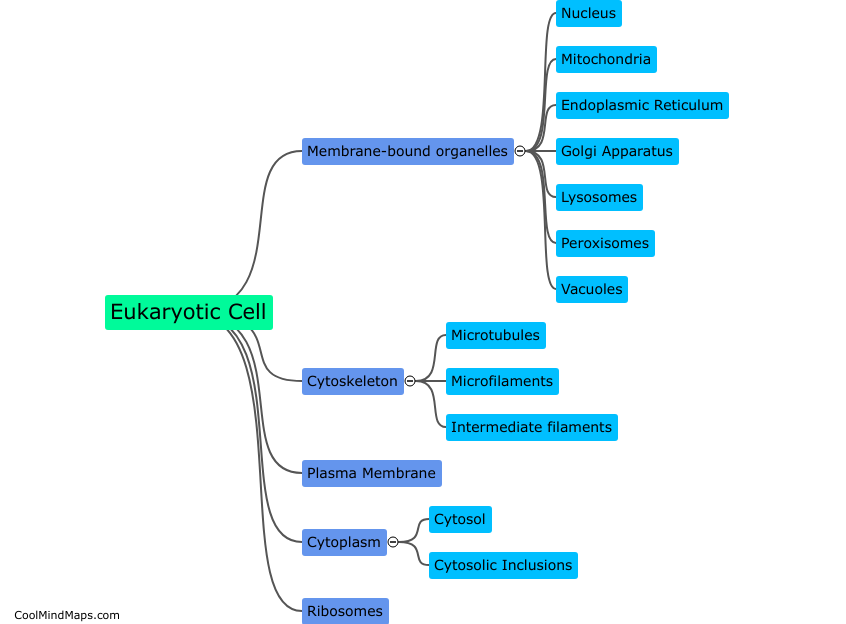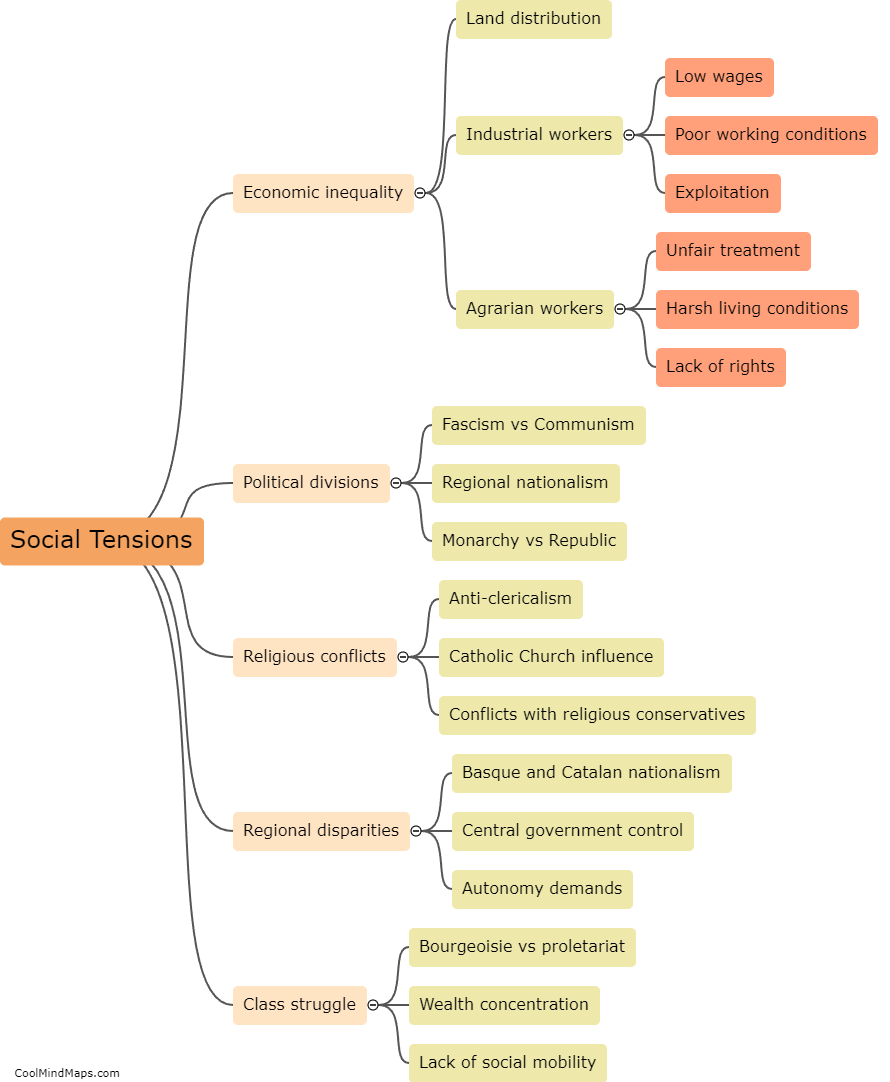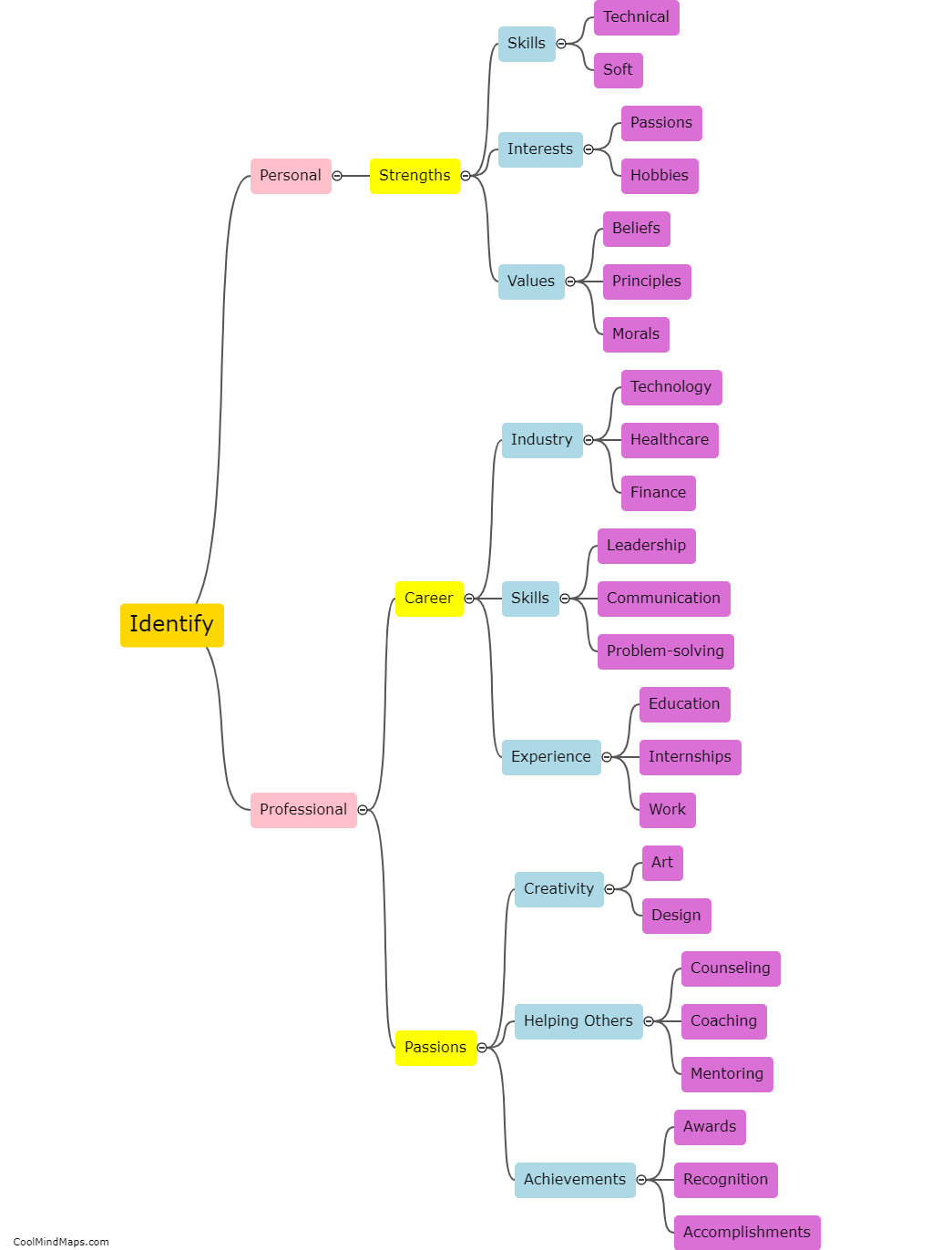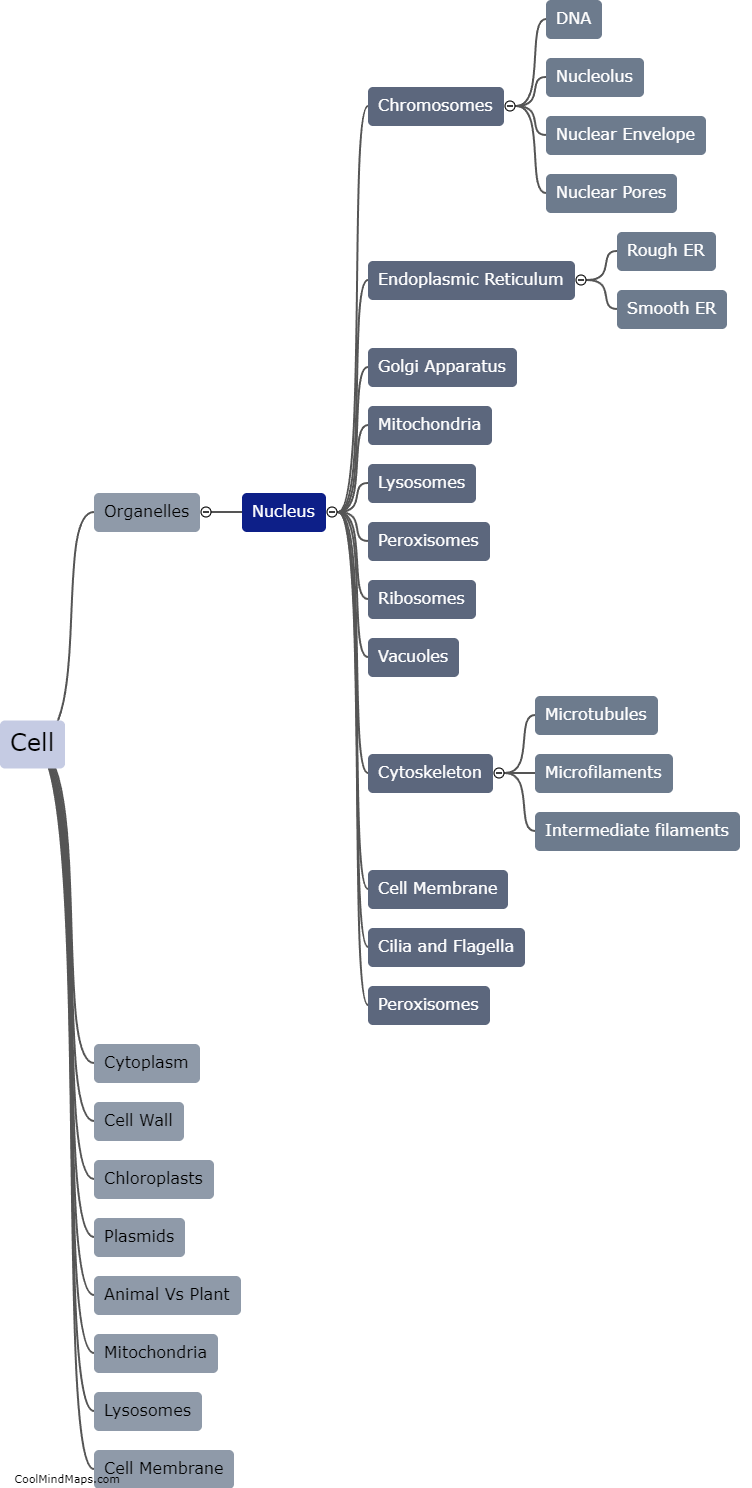What are the main components of a eukaryotic cell?
Eukaryotic cells, found in organisms such as animals, plants, and fungi, are complex and have various specialized components that work together to support their functions. The main components of a eukaryotic cell include the nucleus, which contains the cell's DNA and serves as the control center; the cytoplasm, where various biochemical reactions occur; organelles such as mitochondria that produce energy, endoplasmic reticulum involved in protein synthesis, Golgi apparatus for packaging and transporting molecules, and lysosomes which break down waste materials; ribosomes, responsible for protein synthesis; and the plasma membrane, which regulates the flow of substances in and out of the cell. These components work in harmony to ensure the cell's survival, growth, and proper functioning.

This mind map was published on 24 October 2023 and has been viewed 106 times.











